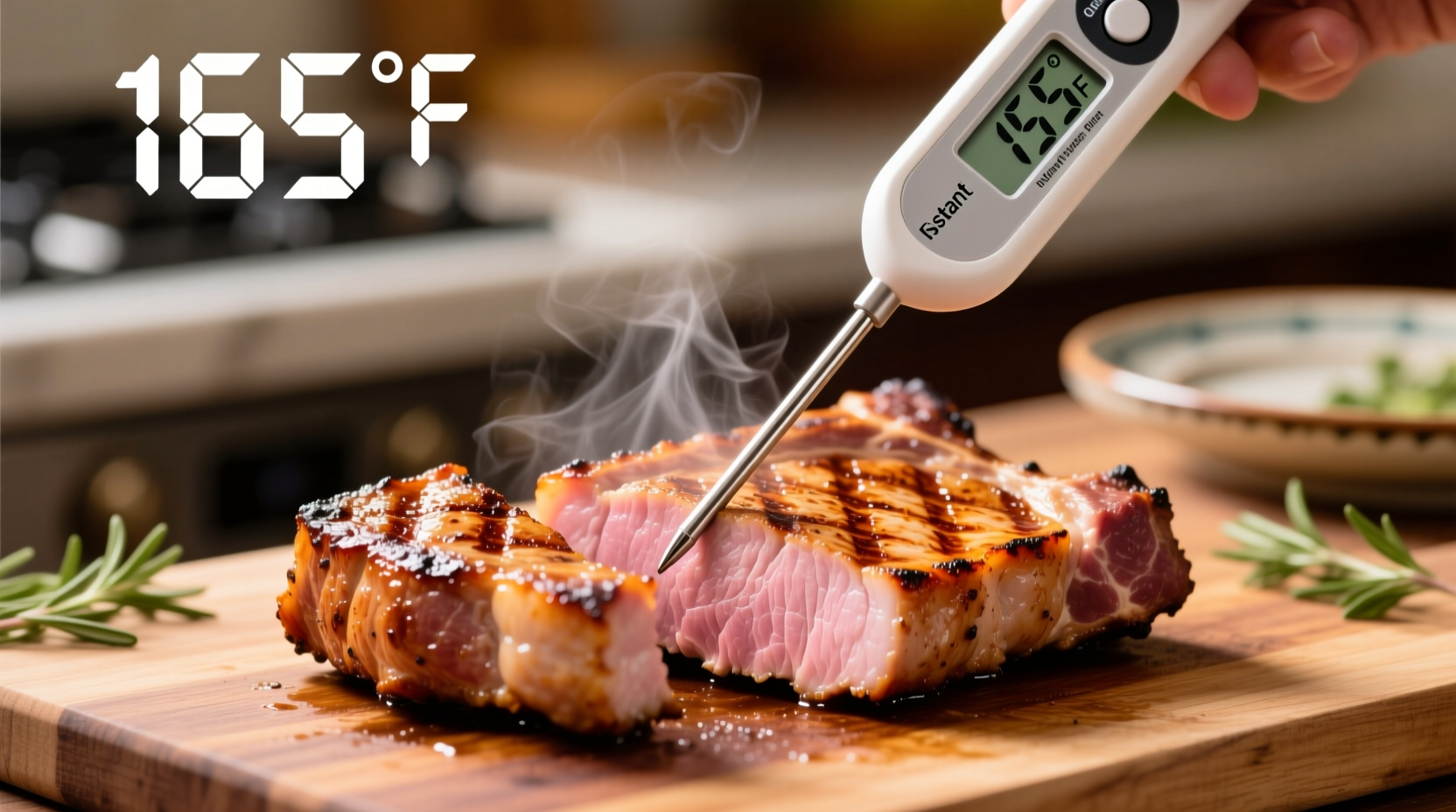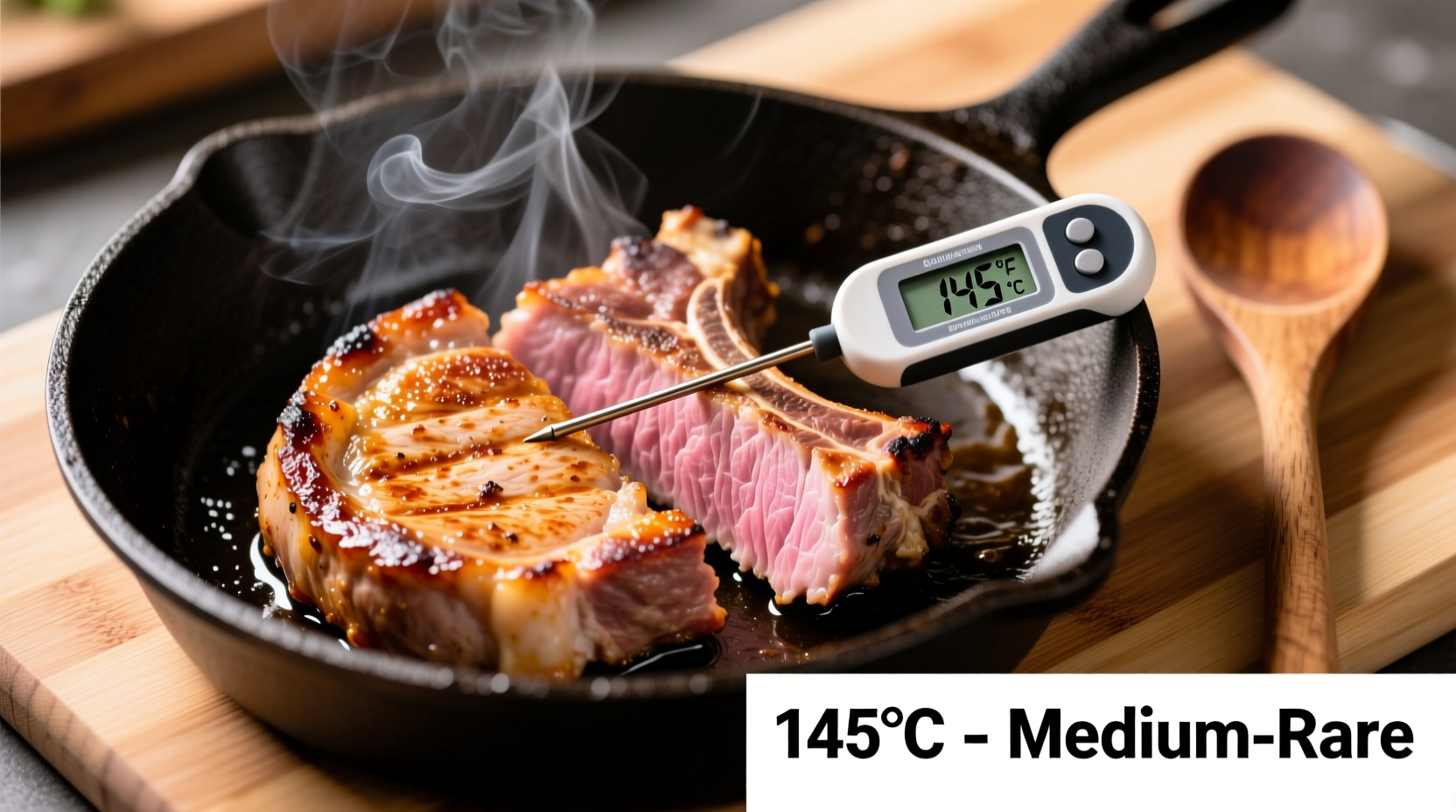For home cooks aiming for perfect pork chops every time, understanding precise temperature guidelines transforms guesswork into consistent results. This guide delivers science-backed cooking parameters with practical implementation steps—no more dry, overcooked chops or safety concerns.
The Science Behind Pork Chop Temperature Standards
Modern pork production has virtually eliminated trichinosis risks in commercially raised meat, allowing temperature recommendations to evolve. The USDA updated its guidelines in 2011, lowering the safe temperature from 160°F to 145°F with a critical 3-minute rest period. This change reflects improved farming practices and scientific understanding of pathogen elimination.
| Year | Recommended Temperature | Rest Period | Scientific Basis |
|---|---|---|---|
| Pre-2011 | 160°F (71°C) | None | Conservative approach for trichinosis prevention |
| 2011-Present | 145°F (63°C) | 3 minutes | Validated pathogen elimination with improved farming |
This timeline demonstrates how food safety standards evolve with scientific advances. The current recommendation balances safety with quality—at 145°F, pork enters the 'medium rare' stage, retaining moisture while eliminating pathogens when followed by proper resting.
Measuring Temperature Accurately: Tools and Techniques
Your thermometer choice significantly impacts results. Instant-read thermometers provide precise spot measurements, while leave-in probe thermometers track temperature progression. For pork chops:
- Insert the thermometer into the thickest part, avoiding bone or fat pockets
- Wait 10-15 seconds for digital readings to stabilize
- Check multiple spots in thicker chops (over 1¼ inches)
- Calibrate thermometers monthly using ice water (32°F) or boiling water (212°F)
Visual cues like color change or juice clarity prove unreliable. The American Meat Science Association confirms that color alone cannot indicate doneness, as factors like pH and cooking method affect appearance without changing safety.

Cooking Method Considerations
Different cooking techniques require temperature management adjustments:
Pan-Seared Pork Chops
Remove chops from heat at 140°F—the final 5°F increase occurs during resting. For bone-in chops, insert thermometer parallel to bone. The FDA Food Code confirms that carryover cooking raises internal temperature 5-10°F during the mandatory 3-minute rest.
Oven-Baked Pork Chops
At 400°F, chops typically reach 145°F in 12-15 minutes depending on thickness. Use a probe thermometer with remote monitoring to avoid opening the oven. Thicker cuts benefit from reverse searing—starting low and finishing hot.
Grilled Pork Chops
Direct heat requires vigilant monitoring. Move chops to indirect heat when they reach 135°F to prevent overshooting the target. The USDA Food Safety and Inspection Service notes that grill temperatures vary significantly, making thermometer use essential.
Why Resting Time Matters as Much as Temperature
The mandatory 3-minute rest serves two critical functions:
- Allows residual heat to eliminate any remaining pathogens
- Enables protein fibers to reabsorb juices, preventing dryness
Covering chops during rest traps heat but risks overcooking. Instead, place them on a warm plate loosely tented with foil. This USDA-recommended approach maintains food safety while optimizing texture.
Troubleshooting Common Temperature Issues
Problem: Exterior browns before reaching 145°F
Solution: Lower cooking temperature by 25°F and extend cooking time. The Maillard reaction occurs at 285°F—adjust heat to match your thermometer progress.
Problem: Inconsistent temperatures within the chop
Solution: For uneven thickness, butterfly thicker sections or use the 'folded cut' technique. The American Institute of Baking confirms that uniform thickness ensures even heat distribution.
Problem: Temperature stalls during cooking
Solution: This natural phenomenon occurs as moisture evaporates. Maintain consistent heat—the temperature will rise again. Avoid increasing heat, which causes uneven cooking.
Temperature Guidelines for Special Situations
Certain scenarios require temperature adjustments:
- Stuffed pork chops: Measure both stuffing (165°F) and meat (145°F)
- Smaller chops (under ¼ inch): Cook to 140°F with minimal rest
- Sous vide cooking: 135°F for 2+ hours, then sear to 145°F
These context boundaries reflect the FDA Food Code's principle that cooking parameters must adapt to specific food characteristics while maintaining safety standards.
Frequently Asked Questions
Can pork chops be pink at 145°F and still be safe?
Yes, pork can retain a pink hue at 145°F and remain perfectly safe. Modern farming has eliminated trichinosis risks in commercial pork. The pink color comes from myoglobin, which doesn't fully denature until 160°F. USDA testing confirms pathogen elimination at 145°F with 3-minute rest.
How long should I rest pork chops after cooking?
The minimum rest period is 3 minutes, as specified in the USDA Food Safety Guidelines. For chops thicker than 1.5 inches, rest 5-7 minutes. Resting allows juices to redistribute and final pathogen elimination through residual heat. Never skip this step, as it completes the cooking process safely.
What's the danger zone for pork chop temperatures?
The danger zone is between 40°F and 140°F, where bacteria multiply rapidly. Pork chops should pass through this zone quickly during cooking. Never let cooked chops sit below 140°F for more than 2 hours (1 hour if room temperature exceeds 90°F), per FDA Food Code guidelines.
Why did older recipes recommend 160°F for pork?
Prior to 2011, USDA recommended 160°F due to trichinosis concerns in traditionally raised pork. Modern commercial farming practices have virtually eliminated this parasite. The 2011 update to 145°F reflects improved food safety standards and scientific understanding, allowing for juicier results without compromising safety.
How accurate must my thermometer be for pork chops?
Your thermometer should be accurate within ±2°F. Calibrate monthly using the ice water method (32°F) or boiling water method (212°F). The National Institute of Standards and Technology recommends checking accuracy before critical cooking sessions, as even small errors can impact food safety and quality.











 浙公网安备
33010002000092号
浙公网安备
33010002000092号 浙B2-20120091-4
浙B2-20120091-4